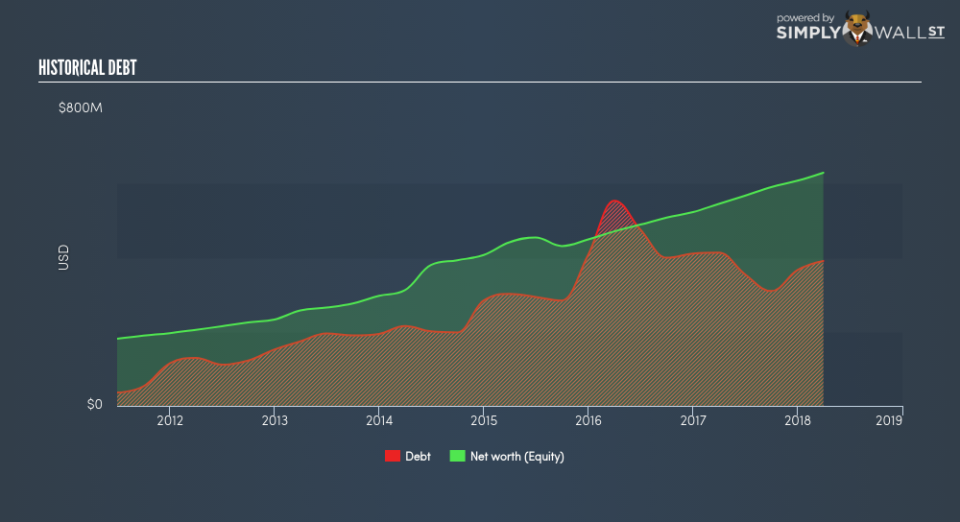Three Understated Metrics For ServisFirst Bancshares Inc (NASDAQ:SFBS) You Should Know

ServisFirst Bancshares Inc’s (NASDAQ:SFBS) profitability and risk are largely affected by the underlying economic growth for the region it operates in US given it is a small-cap stock with a market capitalisation of US$2.36b. A bank’s cash flow is directly impacted by economic growth as it is the main driver of deposit levels and demand for loans which it profits from. After the GFC, a set of reforms called Basel III was imposed in order to strengthen regulation, supervision and risk management in the banking sector. These reforms target bank level regulation and aims to improve the banking sector’s ability to absorb shocks arising from economic stress which could expose financial institutions to vulnerabilities. Since its financial standing can unexpectedly decline in the case of an adverse macro event such as political instability, it is important to understand how prudent the bank is at managing its risk levels. Sufficient liquidity and low levels of leverage could place the bank in a safe place in case of unexpected macro headwinds. Today we will be measuring ServisFirst Bancshares’s financial risk position by looking at three leverage and liquidity metrics. See our latest analysis for ServisFirst Bancshares
Why Does SFBS’s Leverage Matter?
Banks with low leverage are exposed to lower risks around their ability to repay debt. A bank’s leverage can be thought of as the amount of assets it holds compared to its own shareholders’ funds. Though banks are required to have a certain level of buffer to meet its capital requirements, ServisFirst Bancshares’s leverage level of less than the suitable maximum level of 20x, at 11.14x, is considered to be very cautious and prudent. This means the bank has a sensibly high level of equity compared to the level of debt it has taken on to maintain operations which places it in a strong position to pay back its debt in unforeseen circumstances. Should the bank need to increase its debt levels to meet capital requirements, it will have abundant headroom to do so.
What Is SFBS’s Level of Liquidity?

Due to its illiquid nature, loans are an important asset class we should learn more about. Normally, they should not exceed 70% of total assets, however its current level of 83.66% means the bank has clearly lent out 13.66% above the sensible threshold. This means its revenue is reliant on these specific assets which means the bank is also more exposed to defaulting relative to banks with less loans.
What is SFBS’s Liquidity Discrepancy?
Banks operate by lending out its customers’ deposits as loans and charge a higher interest rate. These loans tend to be fixed term which means they cannot be readily realized, however, customer deposits are liabilities which must be repaid on-demand and in short notice. The discrepancy between loan assets and deposit liabilities threatens the bank’s financial position. If an adverse event occurs, it may not be well-placed to repay its depositors immediately. Relative to the prudent industry loan to deposit level of 90%, ServisFirst Bancshares’s ratio of over 98.14% is higher, which places the bank in a relatively dangerous territory to go into negative discrepancy in liquidity. Basically, for $1 of deposits with the bank, it lends out over $ 0.9 which is imprudent.
Next Steps:
We’ve only touched on operational risks for SFBS in this article. But as a stock investment, there are other fundamentals you need to understand. There are three essential aspects you should further research:
Future Outlook: What are well-informed industry analysts predicting for SFBS’s future growth? Take a look at our free research report of analyst consensus for SFBS’s outlook.
Historical Performance: What has SFBS’s returns been like over the past? Go into more detail in the past track record analysis and take a look at the free visual representations of our analysis for more clarity.
Other High-Performing Stocks: Are there other stocks that provide better prospects with proven track records? Explore our free list of these great stocks here.
To help readers see pass the short term volatility of the financial market, we aim to bring you a long-term focused research analysis purely driven by fundamental data. Note that our analysis does not factor in the latest price sensitive company announcements.
The author is an independent contributor and at the time of publication had no position in the stocks mentioned.

